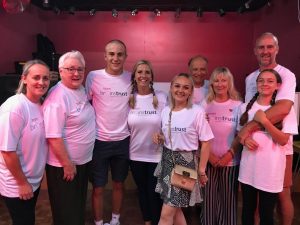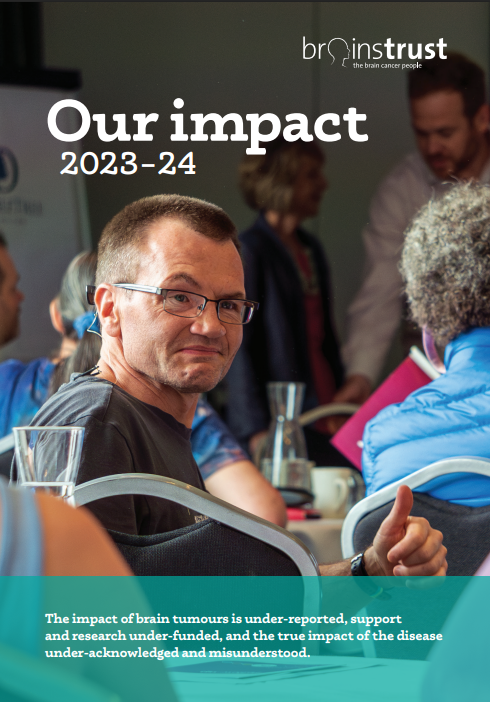Five years ago, Terri’s son, Gary, was diagnosed with an aggressive GBM4 brain tumour. Feeling overwhelmed, Terri contacted places she felt could offer her family support. In her time of need, Terri was either turned away, or added to the bottom of a long waiting list.
When out with a friend, Terri discovered brainstrust. Feeling more alone than ever, Terri picked up the phone and spoke to Helen.
“When I first called, I was so desperate to speak to someone. Helen picked up the phone, and I can’t tell you how much it meant. Helen was incredible. She listened and offered to pay for a second opinion, outsourcing another consultant to review Gary’s diagnosis. Helen did all this in the first phone call, whilst she was out walking the dog. She didn’t have to do that. She didn’t even know me, but I could tell just how much she cared, and wanted to help.”

Sadly, Gary died very shortly after his diagnosis. Ever since, his family and friends have come together to raise vital funds and awareness for brainstrust. A few years later, the family’s close connection with brainstrust only grew stronger when they received some more devastating news.
Following such a terrifying and traumatic time in their lives, Terri’s daughter, Julie, was diagnosed with a meningioma.
“Following the support we received when Gary was diagnosed, I immediately called brainstrust. I was so shocked when, yet again, the charity offered to pay for a second opinion for Julie. I just can’t imagine any other charity doing the same thing, and I can’t thank you all enough for caring about my family like it’s your own.”
Throughout it all, Terri and her family continue to support brainstrust. “We just want to do our bit to say thank you, but I know nothing could ever repay brainstrust.” From taking part in TEAFEST, to conquering Land’s End to John O’Groats, Terri’s family and friends have gone the extra-mile to support others going through a similar journey. Most recently, Julie’s step-son, Finley, braved the shave! Finley unveiled his new look at huge party, raising an incredible £1,800 for brainstrust.
So far, Terri and her amazing network have raised an incredible £11,000 in loving memory of Gary, and in support of Julie. Their fantastic total has already paid for over 55 Meetups, where we invite brain tumour patients and their loved ones to join us for dinner in a friendly, stress-free setting. Our Meetups give people the opportunity to meet others in a similar situation. As Terri said, “there’s nothing better than talking to someone who truly understands what you’re going through.”
We couldn’t be more grateful for Terri’s continued support, and that of her loving family and friends. As you can see, it makes an incredible difference and ensures we can continue to support thousands more people through the devastation of a brain tumour diagnosis.










